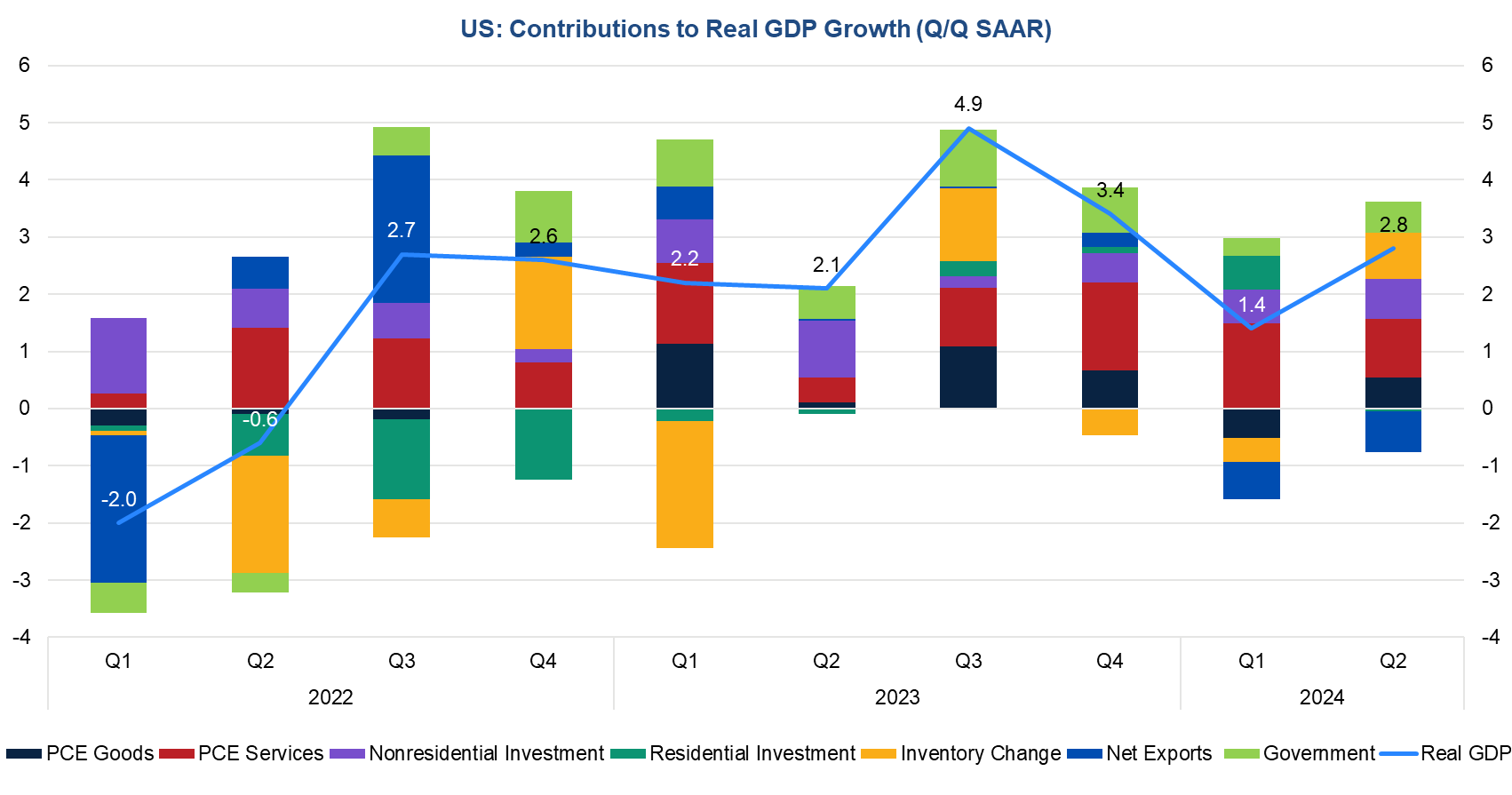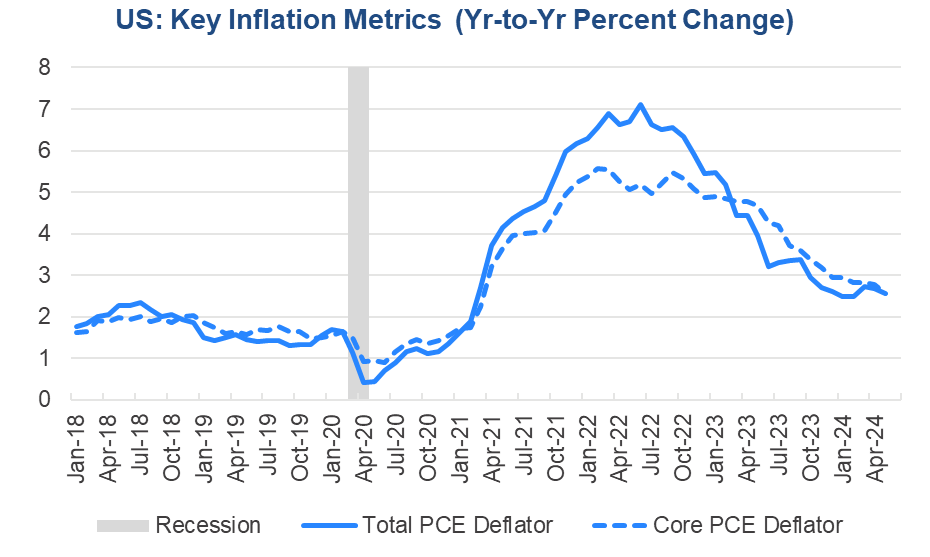-
Email
Linkedin
Facebook
Twitter
Copy Link

Loading...
Figure 1. Inventories and Goods Consumption Led Q2 Real GDP Growth Sources: Bureau of Economic Analysis and The Conference Board. Report Highlights Economy performs better than expected in Q2. Real GDP grew by 2.8 percent in the second quarter after slowing to 1.4 percent in Q1. Gains were led by a sizable increase in inventories and a resurgence in consumer spending on goods. Additionally, government spending improved somewhat after slowing in the first quarter. Nonresidential investment was firmer in the quarter. Meanwhile, household spending on services moderated, residential investment was flat, and net exports weighed on the economy. Consumers spend more on services they need and goods they want. According to the BEA’s press release.The increase in consumer spending reflected increases in both services and goods. Within services, the leading contributors were health care, housing and utilities, and recreation services. Within goods, the leading contributors were motor vehicles and parts, recreational goods and vehicles, furnishings and durable household equipment, and gasoline and other energy goods. Inventories spike. BEA said that the increase in private inventory investment primarily reflected increases in wholesale trade and retail trade industries that were partly offset by a decrease in mining, utilities, and construction industries. Investment performance mixed. Within nonresidential fixed investment, increases in transportation equipment and intellectual property products were partly offset by a decrease in structures. Residential structures were flat as spending on home sales, new construction, and renovations flagged. Net exports cap economic growth. The increase in imports seemed to be driven by businesses, as it was led by capital goods, excluding automotive. Exports were positive in the quarter, but imports were stronger, resulting in a net exports drag on the economy. Domestic demand remains robust, but consumers running low on inputs to spend. Final sales to domestic purchasers, a key measure of domestic demand remained robust increasing by 2.7 percent quarter-over-quarter annualized. Real disposable personal income (i.e., income after tax) slowed to 0.9 percent year-over-year in Q2 compared to 1.5 percent in Q1 and personal savings continued to slow from 3.8 percent in Q1 to 3.5 percent in Q2. Good inflation news. In Q2 the personal consumption expenditure (PCE) price index slowed to 2.6 percent year-over-year from 2.7 percent year-over-year in Q1. The Core PCE price index (i.e., total less food and energy) slowed to 2.6 percent year-over-year in Q2 from 2.8 percent year-over-year in Q1. Figure 2. Inflation on Its Way Back to Fed’s 2-percent Target Sources: Bureau of Economic Analysis and The Conference Board.
Real GDP surprised to the upside in Q2 2024, expanding by a better-than-expected 2.8 percent quarter-over-quarter annualized in the quarter following a tepid 1.4 percent growth rate in Q1 2024.
Trusted Insights for What’s Ahead®


Cutting Discretionary Spending to Offset Higher Prices
March 28, 2025
Auto Makers Hit a Tariff Speedbump
March 27, 2025
Administration acts with Congress to reverse methane fee
March 25, 2025
Fed Keeps Cutting Bias amid “Transitory” Tariff Inflation
March 19, 2025
Retail Sales Show Consumers Are More Frugal amid Uncertainty
March 17, 2025
The EU's Retaliatory Tariffs Will Hit Beef, Bourbon and More
March 14, 2025
